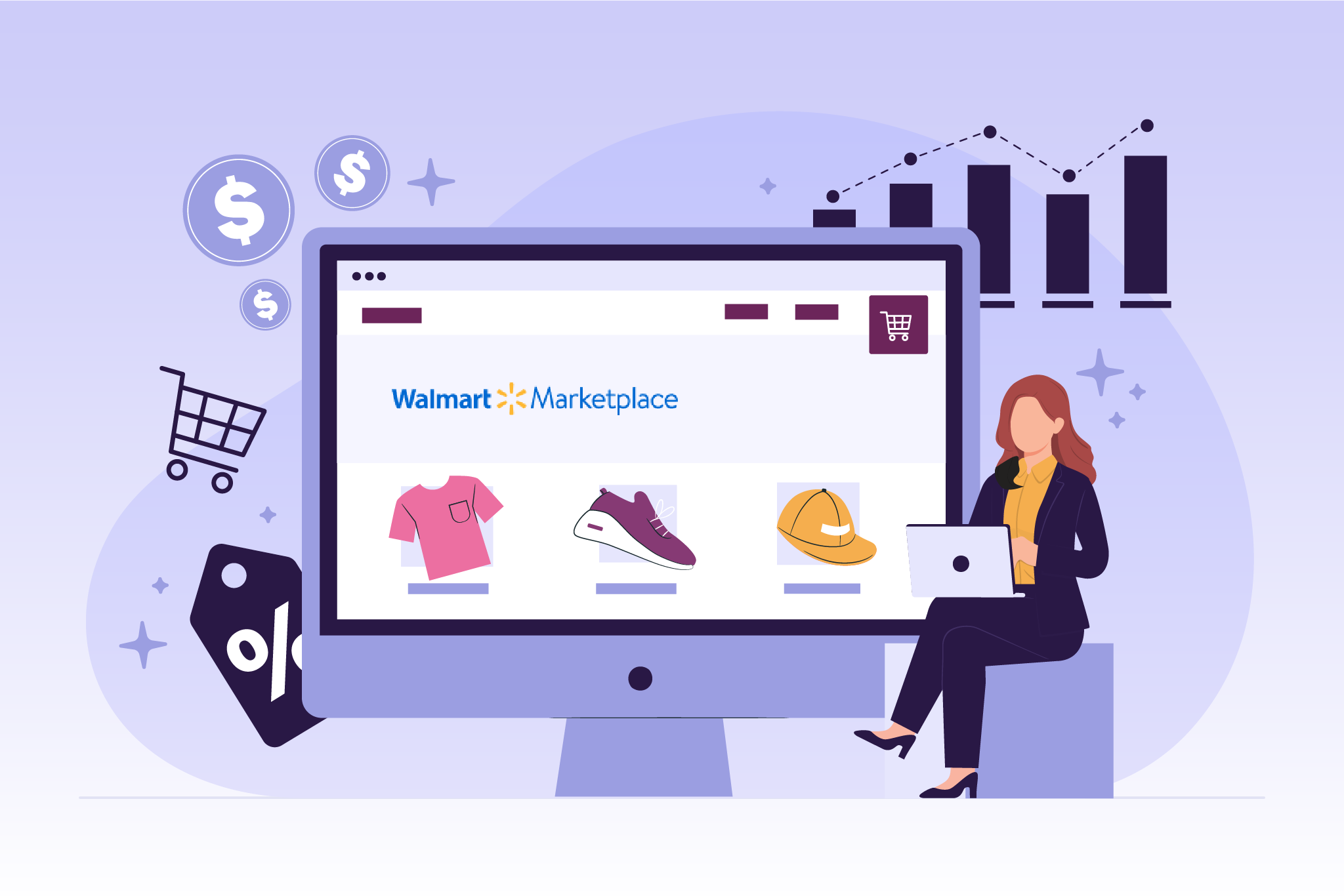Paid ads campaigns are powerful, highly effective ways to generate interest in not only your products, but your brand as a whole. Therefore, when it comes to Amazon Advertising, nothing quite beats a successful campaign via their Amazon Sponsored Products platform. Of course, this is nothing new – the company has been around for years. What has changed – and does every second – is the interests of your audience.
This can be a good thing. With so much competition online, especially on Amazon, it literally pays to make continuous, well-informed optimizations. Staying at the top of your game means staying ahead of the pack. To do this, you need the right data, the right software tools and the right amount of determination. Plenty of patience also helps, as you need to give your ads time to do their thing!
In this Amazon Sponsored Products guide, we’ll start things off gradually with an introduction to the basics. What’s the system all about? Are your products even eligible to integrate with it?– What are the fundamentals of any effective sponsored ads strategy?
Then, it’s time for the “meat and potatoes” of this read that we’re sure you’re hungry for: A walkthrough of all the critical steps you ought to follow to ensure the most successful campaigning possible. Let’s dig in.
The Basics of Amazon Sponsored Products Ads
What is Amazon Sponsored Products Advertising, Anyway?
Simply put, the Amazon Sponsored Products system is a clever spin on the traditional digital product advertising strategy. It costs $29 US dollars a month for a professional selling plan subscription in order to take advantage of this, but you won’t even notice the fee if you manage to sell a lot of products. There are Sponsored Products and Sponsored Brands (Amazon calls them Headline Search ads).Each utilize a cost-per-click (CPC) system where you only pay when your ad is displayed and subsequently clicked, which only sweetens the deal!
Sponsored ads are similar to search engine optimizations, which help your website rank higher in Google’s results pages. The former bump your listings to the top of the Amazon search results page if their algorithm thinks a product is a right fit for a user. Sponsored ads can also show up on the listing pages of yourself and other sellers. Considering that 70 percent of Amazon sales occur on the first page of results – and a whopping 62 percent of those sales are attributed to the first three listings on that page – it’s no wonder that everyone is clamouring to rank as high as possible!
How Do these Ads Differ from Other Types of Sponsored Ads?
Sponsored ads don’t interfere with the user experience because they’re there for the products. If anything, they serve to increase organic traffic from those users already browsing with a high purchase intent. If optimized correctly, they may convince more prospects that your listings are worth that critical click – and maybe a purchase.
Hubspot claims that 44 percent of users go straight to Amazon to start their product searches, and we believe it; this is not a social media platform for private use, nor is it a means of searching for information. Amazon is, first and foremost, a giant online store where practically anything is available, which means the individuals you’re trying to engage have a much higher chance of turning into solid leads – all you have to do is match the right users to the right products and compel them to add your products to their carts.
Product Categories at a Glance
Next, let’s fire through some of the product types eligible for Amazon Sponsored Products advertising:
- All Amazon devices (Kindles, Echo/Fire products, etc.)
- Books, calendars, magazines, and other similar items
- Baby products
- Clothing and clothing accessories (for kids, men, and women)
- Electronic devices (computers, smartphones, car electronics, etc.)
- Automotive products
- Artwork and collectibles
- Perishable products such as cleaning supplies and foods
- Handcrafted items
- Home and garden products
- Personal care and hygiene products
- Jewelry
- Entertainment and hobby-related products (instruments, movies, music, etc.)
- Office supplies
- … and much more!
Otherwise, as stated on Amazon’s advertising website, the only products that aren’t eligible are adult products, refurbished or used items, or those featured in closed categories.
Read more: How to Structure Your Amazon PPC Campaign
Connecting with Your Audience
Why Organic Results Make the Biggest Difference
You might be asking yourself, “why is quality content important to the success of my Amazon Sponsored Products campaign?” Well, take a moment to consider your optimal experience as an online shopper yourself. Do you take more interest in ads with compelling, high-resolution imagery, a title that doesn’t read like spam but entices you, and seller ratings that justify the product investment? Does it feel like the ad aligns with your interests, making it harder to ignore?
This is the effect that top-notch content has on your sponsored ads. The latter can only do so much if you don’t have uniquely worded, compelling value propositions for shoppers to consider. It also helps if you have a good seller rating, great reviews of your products, and plenty of availability to meet demand. Otherwise, each of these can serve as a barrier to a sale. Rather than put money down and hope for a much broader audience to take interest in a certain product or your brand, which is always a gamble, honing in and establishing a more meaningful connection with the right creatives – and data-driven optimizations – is by far the better way to go.
Ideal Use Cases for Amazon Sponsored Products
So, just what are the ideal scenarios for using Amazon Sponsored Products ads? Some examples include:
Product Launches
Readying that latest-generation household gadget with a feature that none of the competition has (for now)? Now’s your time to get the most possible engagement with a thoughtfully optimized ad campaign to support the launch. Using Sponsored Products ads effectively fast-tracks the effectiveness of your targeting, especially if your imagery stands out and you use lucrative keywords.
Seasonal Opportunities
Shoppers love deals, and Amazon is the place to be for the best seasonal discounts. Sellers also know this and take advantage of it, so why not make your listings really stand out? From Black Friday and Cyber Monday to the holiday season, Easter and more, seasonal marketing strategies are great because they demand constant attention, refinement and care. That means you’re essentially forcing yourself to keep a close eye on campaign performance, especially when everyone else is trying to get users to click and convert. If that’s not enough, bear in mind that Sponsored Products ads are excellent for clearing out unwanted inventory – even if you drive prices lower, amplifying conversion volume can compensate as long as you have some sort of profit margin left after calculating your advertising cost of sale.
Non-Holiday Sale Periods and Inventory-Wide Visibility Boosts
Whether you want to market baby clothes to parents or take advantage of back-to-school craziness, there are plenty of non-holiday periods where people just happen to spend more. The same benefits as with seasonal opportunities apply here, but that’s not all. No matter what time of year it is, having your product listings rank higher in search results is always good for business. Visibility is everything nowadays and, to achieve it, it’s best to appear before a competitor offering a similar product – especially if yours is priced lower but has positive reviews to back it up.
The Fundamentals of an Effective Amazon Sponsored Ads Strategy
The Best Listing and Ad Content
As we’ve noted already, content is king. Your listings depend on the most compelling arguments for your products; typos and otherwise go against this strategy. Nobody is going to take your listing seriously if it isn’t rich with accurate, error-free copy. The trick is to show rather than tell; let your products’ unique features, design and pricing do the talking. A compelling summary followed by a clean, tightened and to-the-point list of features – cleverly disguised value propositions – are critical. The same goes for any subheadings and product names, both of which need to make it easy to understand just what it is you’re selling. The same goes for visual creatives such as imagery and video; They should show your product in action, provide accurate dimensions and convince shoppers that it’s well made – that pet carrier is going to draw more eyes with a tabby comfortably snuggling inside it! Of course, the only way to ensure your listing content performs well is to augment it with natural keyword insertions that aren’t obvious to readers, but we’ll touch on this a little later in this guide.
Budget Each Listing Properly
We’ve covered how to budget properly in another guide of ours, A Beginner’s Guide to Amazon PPC, but let’s revisit the essentials via these four quick steps to ensure you know how to perform the accurate calculations:
- Figure out your current revenue, plus how much each product costs to make and list (include all fees, etc).
- Next, calculate your profit margin per sale by deducting all the associated product costs from the price you’re selling the item for.
- Determine break-even advertising cost of sale (ACoS) – ensuring you make some sort of profit per product sold – by ensuring what you pay to advertise each listing doesn’t exceed your profit margin.
- Lastly, identify how much you want to earn in profit from every sale – let’s say 10 percent in this case. To ensure you meet this goal, a term known as the target advertising cost of sale (or TACoS, if you’re feeling snacky), be certain that whatever is left over after deducting the break-even ACoS from the profit margin at least meets this percentage. If it’s lower, you either need to raise the sale price or lower your ad spend. Ideally the latter so you can remain competitive in the eyes of potential shoppers. A little rhyme for remembering this rule: if you’re hungry for TACoS, don’t fill up on ACoS.
This process needs to be repeated for each individual product listing you have. Those that aren’t properly budgeted are wild cards that could prove costly to your business later on. You also need to be smart about how much you bid per keyword, lowering ad spend.
Critical Steps for Every Amazon Sponsored Products Campaign
We’re now in the final stretch of our Amazon Sponsored Products guide. We’ve covered the fundamentals and provided some starter tips. To finish off, in order, here are the steps you absolutely need to follow to get the most out of your sponsored ads campaign.
Getting Your Account Set Up
As noted earlier, the system utilizes a subscription-based format in tandem with a cost-per-click model. To sign up, head over to the Selling Plan section of your profile and select the “Modify Plan” option. Here, it’s easy to upgrade to a Professional Seller account, which allows you to use the Sponsored Products tools. Not all billing changes will be reflected in your account right away.
Setting Realistic Goals
Now that your profile is set up, just what are you trying to achieve with your listings? Is a certain product a hard sell due to its niche nature? Or, perhaps you’re eager to draw more eyes during the holiday season to increase conversions. Regardless, be sure that you’re being mindful and reasonable about what you want to advertise. Budgets are finite, sadly, so there’s no reason to overspend on a bunch of campaigns at the same time, especially if you’re new to PPC or Amazon Sponsored Product ads in the first place. Focus on one product at a time, carefully.
Performing the calculation steps we mentioned a while back can be your saving grace here, so be sure to refer to them if you don’t know where to begin in terms of goal-setting.
The Right Products in the Right Categories
As an example, are you selling a high-performance laptop geared towards PC gamers? It should be classified under PC gaming hardware, and don’t forget to include high-resolution imagery that shows the user what makes it a compelling option – including those dimensions and whether it has a unique, striking design. Also, don’t forget to include what internal specifications are included, along with a high-quality description that provides just enough detail to engage them – you don’t want to be overwhelming or too salesy. If you have your products in the right categories, Amazon’s algorithm will sooner pick those listings up.
Keyword Matching, Bidding
Choosing the right keywords isn’t all that is required to ensure a successful campaign; you also need to stay within your budget when bidding on keywords in order to keep your ACoS under control. Otherwise, as touched on earlier, you’ll eat into your profit potential.
First, identify which common search terms (keywords) relate best to your listing. Those that you don’t think will be effective enough to incorporate shouldn’t be matched to your products (these are negative keywords). Then, you need to bid the maximum amount you are willing to pay in return (the cost per click or CPC) every time someone clicks the sponsored ad.
There are two tricks here, the main one being that you have to be careful about how you match the keyword to the phrasing in your listing. There are three types of keyword matches you can perform: broad matches allow you to move the odd word around and still be relevant to the user’s search; phrase matching needs to be closer to the same wording as the keyword; exact matches do what they say on the tin and have to be precisely the same, right down to letter placement and spacing. Depending on whether you use an automatic or manual campaign strategy, different match options will be available, with manual being the only choice for outright adding keywords.
The second trick to successful matching and bidding is to take advantage of the second-highest bid – because that’s the one you’ll be paying if you win! That’s right, you don’t pay the maximum bid you make, but rather the one that the seller in second place has raised. This can be a great way to save more money than anticipated, and those savings are always guaranteed if you never bid more than what you can really afford.
Optimize, Optimize, Optimize!
As your campaign rolls on, you can’t fall into a false sense of security. Constant tracking of every ad’s performance, the number of clicks, conversion rates, your cost-per-click figures and many other details are critical data points that must be actively monitored. If you manage multiple campaigns, this can be a real challenge, which is why self-driving software solutions like Trellis can literally save the day. Augment your Amazon Sponsored ads with automated optimizations that make informed decisions on what is effectively an “autopilot mode,” complete with a comprehensive dashboard and insights for you to consult along the way. Whether you need to know which listings to pull, whether inventory changes are needed to meet rising demand or otherwise, you don’t have to guess or make these decisions alone.
Ready to Optimize and Strategize? Start Your Trellis Journey with a Free Demo!
And that’s our Amazon Sponsored Products guide! There was a lot of ground to cover and this is just the tip of the iceberg, but we hope that this read can help you get more out of your campaigns. Using our hassle-free, self-driving PPC software is as easy as a few clicks: plan and create your ads for specific products, set your advertising cost of sale and monthly budget, then hit activate. We literally do the rest, autonomously discovering keywords, making informed bid optimizations and more. To learn more about the cost-saving, potential-boosting benefits of Trellis, contact us today!





